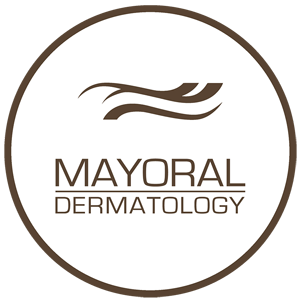60 percent of adults would be more embarrassed by visible underarm stains than by having bad acne (58 percent) or being overweight (47 percent).
*International Hyperhidrosis Society
There are many conditions that can affect our day-to-day routines. Many of these conditions target the skin, the hair and glands that can cause a lot of stressful, inconvenient symptoms but aren’t necessarily damaging to your health. One condition in particular is hyperhidrosis. This type of medical condition makes a person sweat uncontrollably and at random times, even when they are not located in a warm climate or heated environment. If you or someone you know is currently suffering with hyperhidrosis, you know it can be troublesome to say the least, but there is a lot more to know about this condition to help you understand it and better get treated.
Understanding Hyperhidrosis
While most of us sweat causally and during common times when our body temperature rises such as when nervous or when active, a person with hyperhidrosis sweats anytime, no matter what. This is due to having overactive sweat glands. There are two different types of this condition too, those who find they have excessive sweating in focused areas such as under the arms or on the hands, this type is called primary hyperhidrosis and is usually a genetic disorder. The other type is called second hyperhidrosis and this can affect the entire body so a person who has this will notice that the whole body feels wet and clammy rather than just one significant area. There are a few causes to second hyperhidrosis such as anxiety, heart disease, medications, cancer and hyperthyroidism to name a few.
How Do You Know You Have Hyperhidrosis?
Those who have this condition will probably know due to excessive sweating, but sometimes it can be hard to tell on their own. If you experience unexplained sweating at random times, even when the body is cool, you might want to speak with your doctor to find out more. When you go in for a check up with your doctor you’ll be able to find out whether you are suffering from hyperhidrosis or not and then will be able to get the proper treatment for this condition.
Your doctor will prepare a few tests and will ask certain questions to figure out whether you do in fact have hyperhidrosis. Many doctors use a starch-iodine test to find out if certain areas on the body are sweating excessively, while others use a paper test, where they place a special paper on the area to see how much sweat is absorbed and how quickly. Your doctor will also ask when the sweating occurs, how often and what triggers the sweating on your normal, day-to-day schedule. All of this will help your doctor learn whether you are suffering from hyperhidrosis or not.
How Can You Treat Hyperhidrosis?
[subtitle]
People who suffer from excessive sweat:
- 25% Avoid certain fabrics
- 21% Avoid certain colors
- 19% Wear black
- 12% Carry additional clothing
- 11% Change clothes several times a day
*International Hyperhidrosis Society
[subtitle]
While hyperhidrosis might seem like a nuisance, it doesn’t have to ruin your everyday life. There are plenty of different treatments that you can discuss with your doctor to see which one might be the best option for you. There are many medications that a doctor can prescribe to a patient with hyperhidrosis to help prevent overactive sweat glands in various areas of the body. Strong antiperspirants can also be used under the arms when the excess sweating appears there mostly. Your doctor will be able to prescribe a deodorant that has a high dose of aluminum chloride that can help stop excess sweating that a normal over-the-counter deodorant can’t do.
Other treatments include a procedure called iontophoresis. This treatment can actually stop sweat glands from produces sweat by using electricity. However, this type of treatment is normally only used on those who produce excessive sweat on the hands and feet because these limbs need to be dunked in water while an electric current is used to basically shock the glands from temporarily stop working. Botox has also been known to be used to help with overactive sweat glands that occur under the arms. Small injections are placed under the arms to help block the nerves so that the sweat glands temporarily get paralyzed and don’t work.
Surgery and lasers can also be used on those with severe sweating issues that cannot be treated with other methods. Your doctor will be able to go over all of these procedures with you if he or she feels that you might be a likely candidate for one or when other procedures have yet to show any sign of working.
There are many different treatments you can try to help rid the annoyance of hyperhidrosis so it’s important to understand that you don’t have to live your life with excessive sweating. While this type of condition isn’t something that will necessarily affect your health, it can be damaging to your self esteem because no one really wants to sweat all the time in public when they are not even overexerting themselves.
If you are someone who has been dealing with excessive sweating for a long period of time and think that you might have hyperhidrosis, it might be a smart idea to speak with a doctor to understand your condition. This will help better you and allow you to finally get the proper treatment to help stop the use of your overactive sweat glands. You don’t have to live your life worrying about excessive sweating under your arms, face, hands or feet. There are treatments you can try to help you feel better about your body both physically and mentally and all you need to do is head to your doctor today to get started.
References:
-
IHHS Sweat Survey. International Hyperhidrosis Society. Retrieved from http://www.sweathelp.org/pdf/Sept-Oct_2008.pdf

